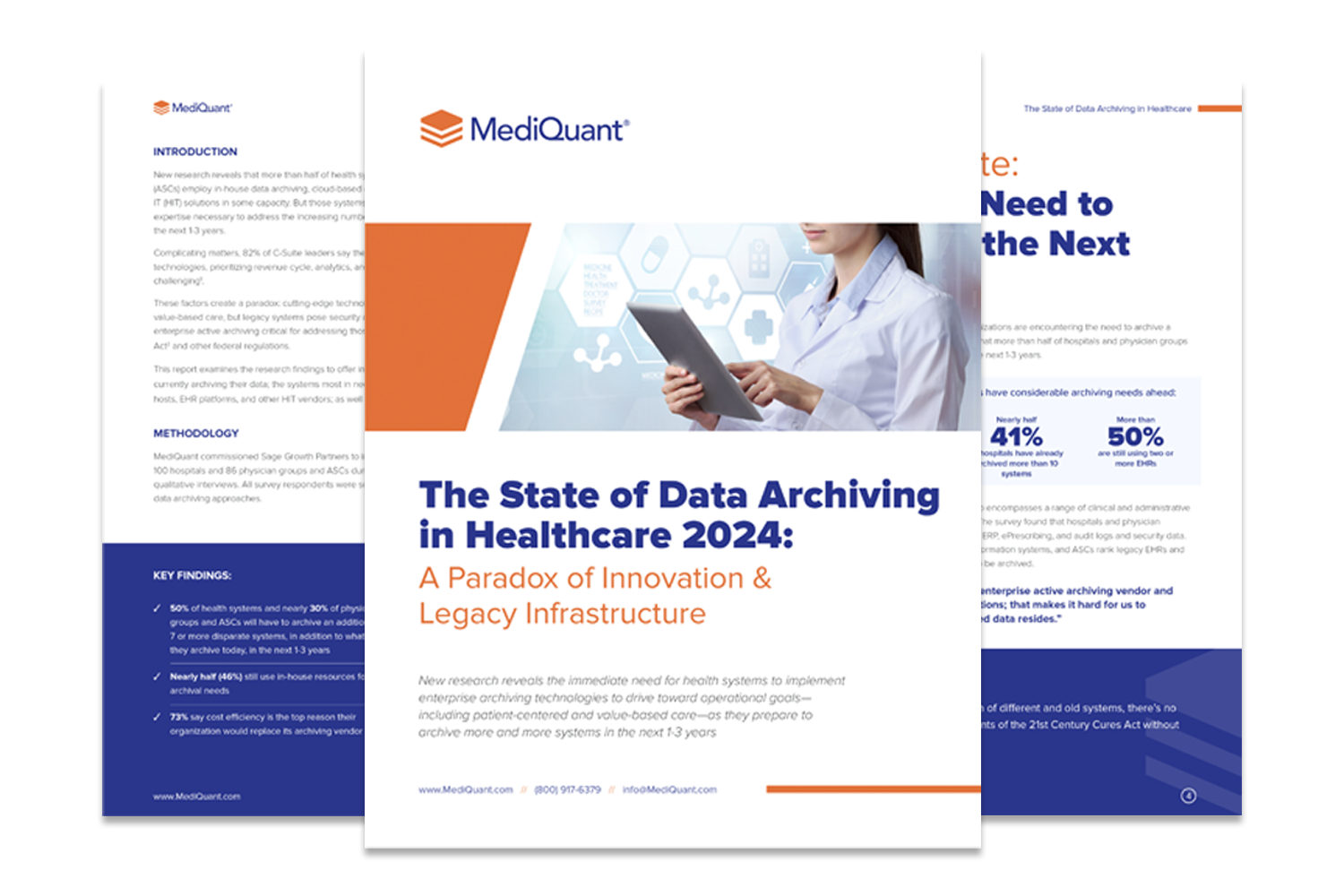By Cindy Adkins
After making acquisitions, healthcare organizations want to use the same enterprise systems across all facilities, which raises the question about what to do with the legacy systems and data.
During a June featured session sponsored by MediQuant as part of Becker’s Health IT + Revenue Cycle Management Virtual Forum, Cindy Adkins, Director of Revenue Cycle Solutions at MediQuant, discussed the data archival process after an acquisition.
Five key takeaways were:
- Post-acquisition, health systems must decide how to proceed with their legacy systems. After acquisitions, health systems typically move to one internal accounts receivable platform. But, as Mrs. Adkins noted, “You’ve got all these disparate systems sitting out there. You need to figure out how you’re going to get that AR run down. You’ve got some decisions.” Among the options are leaving existing systems running, migrating or converting to a new system, archiving all legacy data, using offline storage or destroying the legacy data.
- Start with taking a data inventory. A health system should take a complete data inventory This involves using a tool to pull together a list of all data application systems. Understanding the different data types and whether data is discrete or non-discrete is critical. Ms. Adkins emphasized the importance of managing the data. “You’ve got to be able to say, ‘This one is old data,’ or ‘All my AR has been worked down,’ or ‘This data can be put into a static archive space,'” Ms. Adkins said. “You need to manage what you have and then make a decision on upcoming needs.”
- Although establishing an active archival system can be preferred over writing off balances or operating disparate systems, choosing the right platform includes several considerations. Healthcare organizations that decide not to write off balances from acquired companies or continue operating multiple data systems must find a single data archive system. Considerations for such a system should include whether the entire enterprise has a single sign-on option and whether users can see patient information across all systems. Identifying business owners and establishing governance and retention policies must be done.
- An active data archival system must meet specific needs of the RCM business staff. Before making a final decision, it is important to solicit input from the revenue cycle central business office. They will want to know whether open balances will exist, if staff can work balances down to zero, and which interfaces may be required, among other things. Ms. Adkins added that organizations should consider whether payment can be posted manually or electronically, how demographics such as insurance or marital status can be updated and whether information can be easily used in an audit request.
- Retrieval and reporting of data must be considered when selecting an active archival system. If a healthcare organization has open receivables and wants to work the receivables — and if the health system cannot afford to run its legacy systems — then it must select a good archival system. When choosing such a system, Ms. Adkins suggested answering a number of questions, including: Can I get a transaction report of anything posted? Can I upload my master files? Can I do batch or manual postings?


